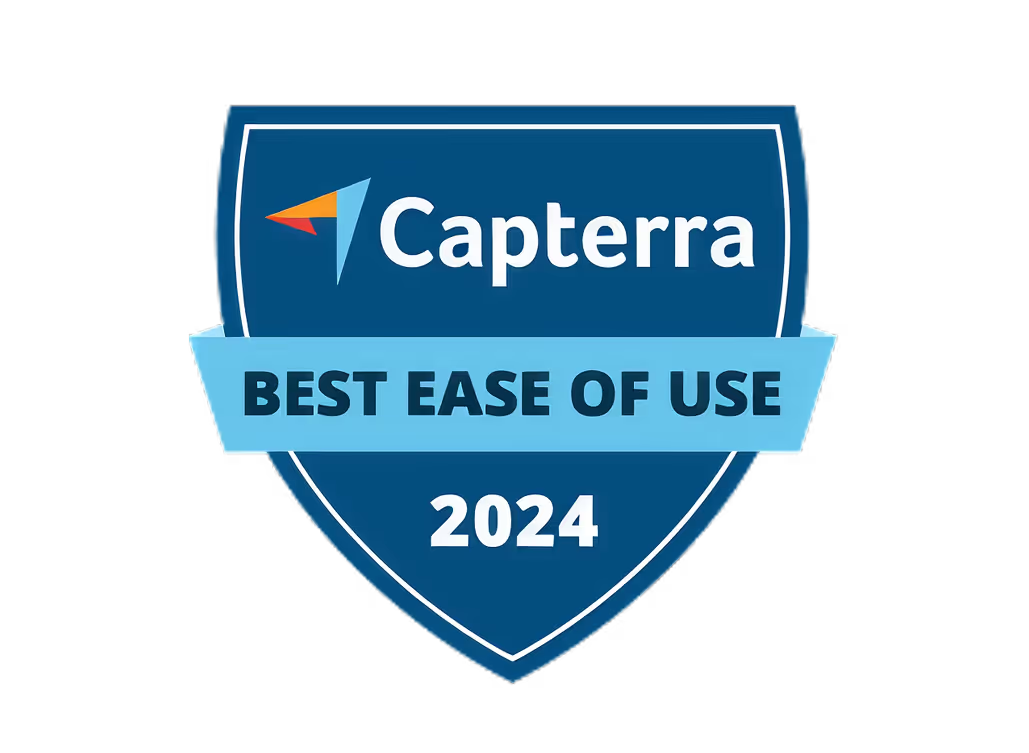Video Brand Guidelines: Graphics & Animation

Maintaining visual consistency across videos is crucial for building brand recognition and trust with your audience. This guide outlines steps to create video brand guidelines for graphics and animations to ensure a unified look and feel that reinforces your brand identity.
Related video from YouTube
Key Takeaways
- Define core brand elements like colors, fonts, logos, and visual style
- Establish guidelines for graphic styles (illustrations, icons, photos, layouts)
- Set animation principles for timing, movement, and transitions
- Create reusable templates for lower thirds, intros/outros, icons, and animations
- Integrate graphics and animations while balancing visuals, audio, and accessibility
- Implement a review process and conduct regular audits for quality control
Quick Comparison: Animation Transition Styles
Transition StyleDescriptionFadeGradual transition from one scene to anotherCutSudden transition between scenesSlideOne scene moves out to reveal anotherDissolveOne scene blends into the next
By following these guidelines, your videos will have a consistent, professional appearance that aligns with your brand's personality and resonates with your target audience.
Core Brand Elements
Core brand elements are key to creating a consistent look in video graphics and animations. These elements help your audience recognize and remember your brand.
Brand Colors
Choosing the right colors is important for a consistent look. Colors can evoke emotions and create associations with your brand. Consider the following:
- Color harmony: Pick colors that look good together.
- Brand associations: Choose colors that match your brand's personality and message.
- Consistency: Use the same colors across all videos.
Fonts and Typography
Using the same fonts helps create a professional and recognizable look. Consider the following:
- Font style: Pick a font that matches your brand's personality.
- Font size and spacing: Keep sizes and spacing consistent.
- Typography hierarchy: Create a clear order of text to guide viewers.
Logo Usage
Proper logo placement and usage are important for a professional look. If you haven’t found the perfect logo yet, try a top logo maker to create a professional design quickly. Consider the following:
- Logo size and spacing: Display logos prominently and consistently.
- Logo placement: Place logos in the same spot, like the top-left or bottom-right corner.
- Logo animation: Use animations to make logos dynamic.
Visual Style and Tone
The overall look and feel of your videos should reflect your brand. Consider the following:
- Brand personality: Match the visual style and tone with your brand's personality.
- Target audience: Create a style and tone that appeals to your audience.
- Consistency: Keep the style and tone the same across all videos.
Graphic Style Guidelines
Graphic style guidelines help create appealing and consistent graphics in your videos. This section covers illustrations, icons, photos, stock footage, and graphic layout and design.
Illustrations and Icons
When creating illustrations and icons, keep in mind:
- Consistency: Match the style with your brand's visual identity.
- Simplicity: Use simple shapes and lines for clean and recognizable designs.
- Color: Stick to your brand's color palette.
Illustrations and icons can break up text, add visual interest, and make videos more engaging. Use illustrations to explain complex ideas and icons to highlight key points.
Using Photos and Stock Footage
When adding photos or stock footage, consider:
- Relevance: Ensure they match the content and message of your video.
- Quality: Use high-quality, clear, and well-lit images.
- Brand alignment: Make sure the style and tone fit your brand's visual identity.
Photos and stock footage can add visual interest, create a realistic setting, or showcase products or services.
Graphic Layout and Design
When designing graphic layouts, focus on:
- Balance: Create a visually appealing and balanced layout.
- Hierarchy: Establish a clear order of text and graphics to guide the viewer's attention.
- White space: Use white space effectively for a clean design.
Graphic layouts should communicate the message clearly and engage the viewer. Use concise text and ensure the graphics are visually appealing and well-designed.
sbb-itb-606b7a1
Animation Guidelines
Animation Timing and Movement
Animation timing and movement should feel smooth and natural. This enhances the brand's storytelling and user experience. Understanding easing is key. Easing controls how an animation speeds up or slows down.
- Ease-in: Creates anticipation.
- Ease-out: Creates a sense of finality.
- Linear, quadratic, cubic: Different easing functions for various styles.
Motion Principles
Key motion principles make animations more engaging:
- Anticipation: Builds expectation before an action.
- Follow-through: Continues movement after the main action.
- Overlapping action: Multiple objects move at once for continuity.
- Staging: Focuses viewer's attention on important elements.
Transition Styles
Transitions between scenes or elements help create a unified narrative. Establish guidelines for transition styles:
Transition StyleDescriptionFadeGradual transition from one scene to another.CutSudden transition from one scene to another.SlideMoves one scene out to reveal another.DissolveBlends one scene into another.
Reusable Assets and Templates
Creating a library of reusable graphic templates and assets helps streamline video production and maintain consistency across all video content. This library should include various templates and assets that can be easily customized for different video projects.
Lower Thirds and Title Cards
Develop a set of lower third and title card templates that match the brand's visual identity. These templates should include customizable fields for text, color, and font style. Ensure the design is clean, simple, and easy to read. Provide guidelines for when to use each template, such as during interviews, presentations, or explanatory videos.
Intro and Outro Sequences
Create engaging intro and outro sequences that align with the brand's style and leave a lasting impression on viewers. These sequences should be short, visually appealing, and consistent across all videos. Offer tips for customizing these sequences to fit different video projects, such as using different colors or fonts.
Icons and Illustrations
Develop a set of icons and illustrations that can be reused across various video projects. These icons and illustrations should be simple, scalable, and consistent in style. Ensure they are easily customizable to fit different video projects and branding requirements.
Motion Graphics Elements
Discuss the importance of motion graphics elements, such as transitions, animations, and kinetic typography, in creating engaging and dynamic video content. Provide guidelines for their consistent use in videos, including tips for customizing them to fit different video projects and branding requirements.
Integrating Graphics and Animations
Integrating graphics and animations into your video content can improve the viewer experience and make your brand stand out. However, it's crucial to do so in a way that balances visuals and audio, ensures accessibility, and optimizes file sizes.
Balancing Visuals and Audio
When adding graphics and animations, it's important to balance them with the audio. Ensure that your visuals complement, rather than overpower, the audio and narration. This can be achieved by:
- Keeping graphics and animations simple and unobtrusive
- Using animations to highlight key points or explain complex ideas
- Ensuring that audio and visuals are synchronized
Accessibility Considerations
Accessibility is important for all viewers. To make your content accessible, consider the following:
- Add closed captions for viewers with hearing impairments
- Ensure color contrast is sufficient for viewers with visual impairments
- Provide alternative text for graphics and animations to aid screen readers
File Optimization
Optimizing your video files is crucial for smooth playback across different platforms. Consider these tips:
- Use compression techniques to reduce file sizes
- Choose preferred file formats for each platform (e.g., MP4 for YouTube, MOV for Vimeo)
- Optimize video resolution and bitrate for web playback
Quality Control and Consistency
Maintaining consistent quality and following brand guidelines are key for video brand management. Implementing a review process and conducting regular audits can help achieve this.
Review and Approval Process
Set up a clear review and approval process to ensure all video content meets your brand's standards before publication. This process should include:
- Checking visual and audio elements
- Reviewing graphics, animations, color palette, typography, and tone
- Involving key stakeholders for feedback
Regular Audits and Updates
Regularly audit your video content to find areas for improvement and keep your brand guidelines up-to-date. This involves:
- Reviewing your video library
- Assessing performance metrics
- Gathering audience feedback
Use this information to update your brand guidelines and refine your review process.
Conclusion
Key Takeaways
Creating video brand guidelines for graphics and animation helps keep your videos consistent in style and branding. By following these guidelines, your videos will match your brand's visual identity, tone, and message. This leads to better brand recognition, more engaged viewers, and a stronger brand image.
Continuous Improvement
To keep your video brand guidelines effective, regularly update them based on feedback from your team and audience. Encourage open communication among team members and review your video content often to find areas for improvement. This way, you can adjust your guidelines to meet the changing needs of your brand and audience, leading to more engaging and effective videos.


















